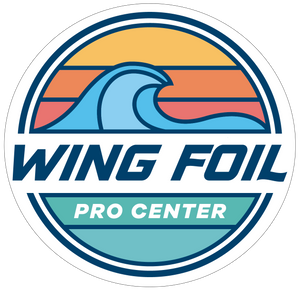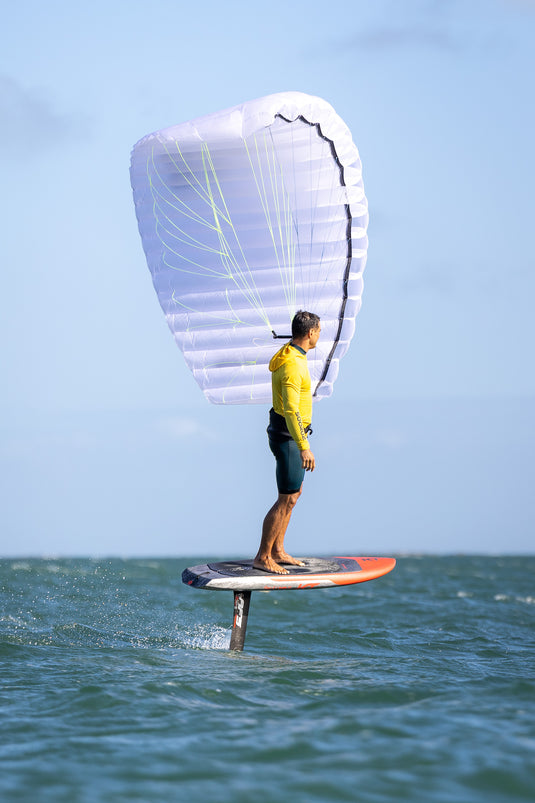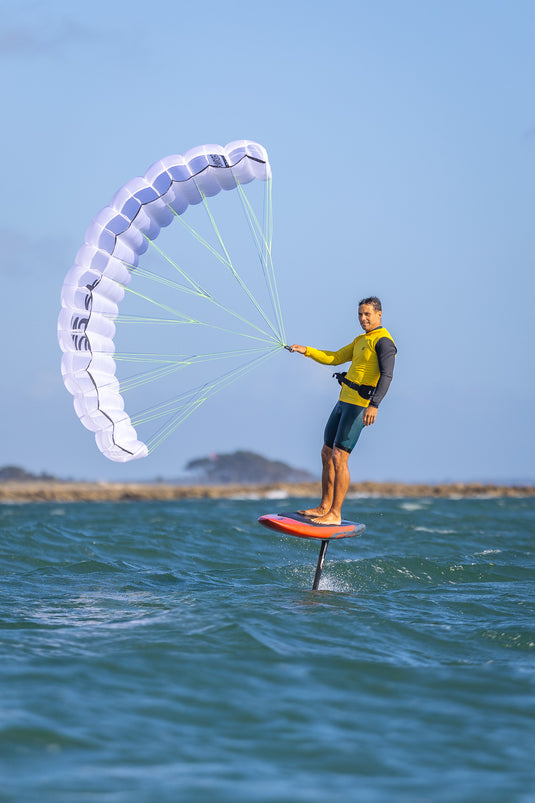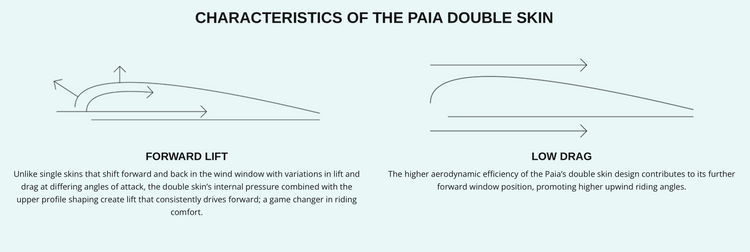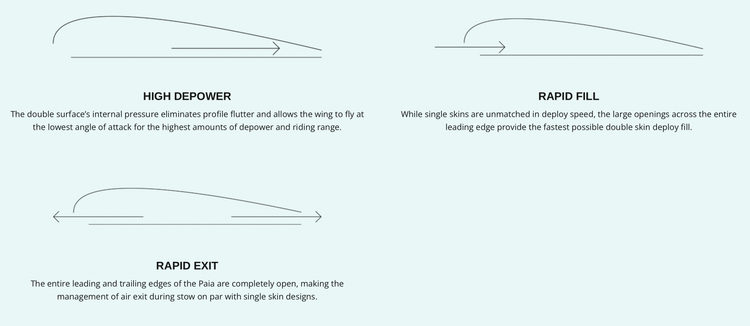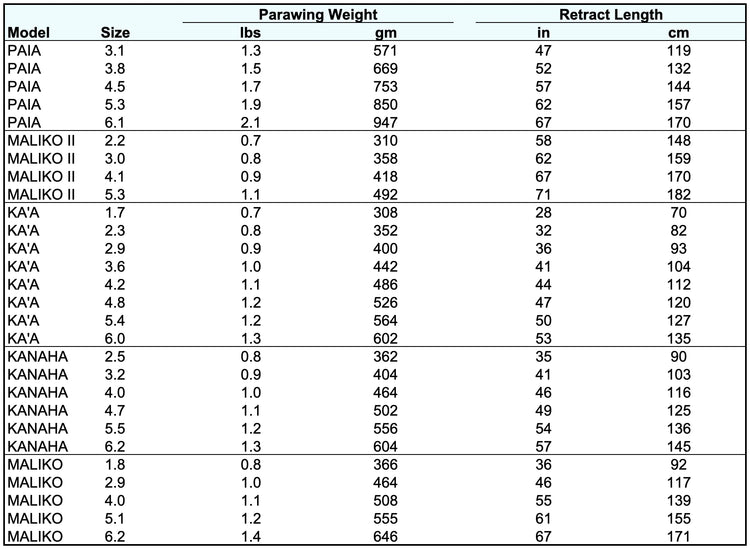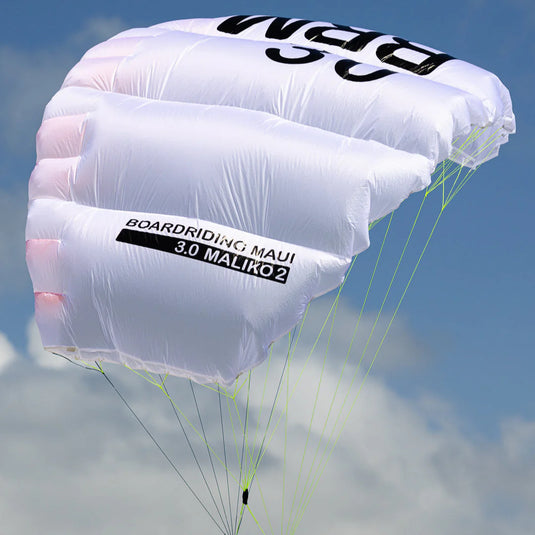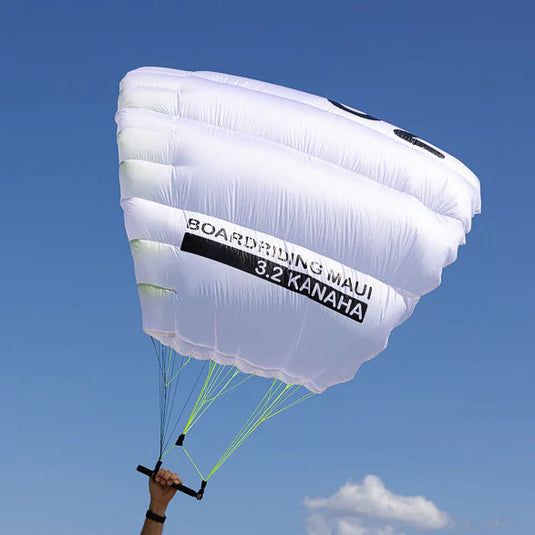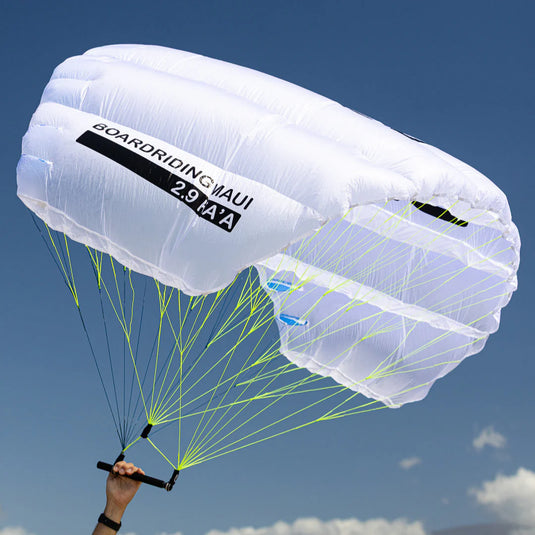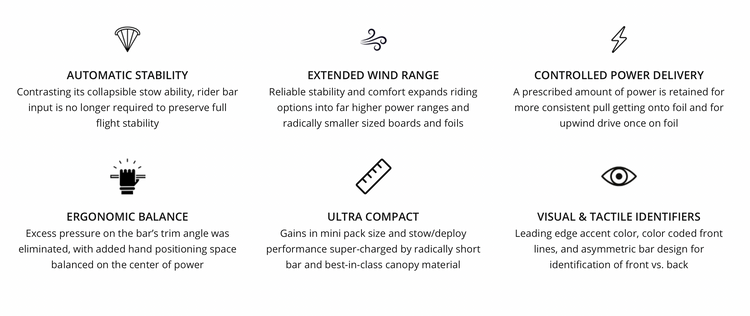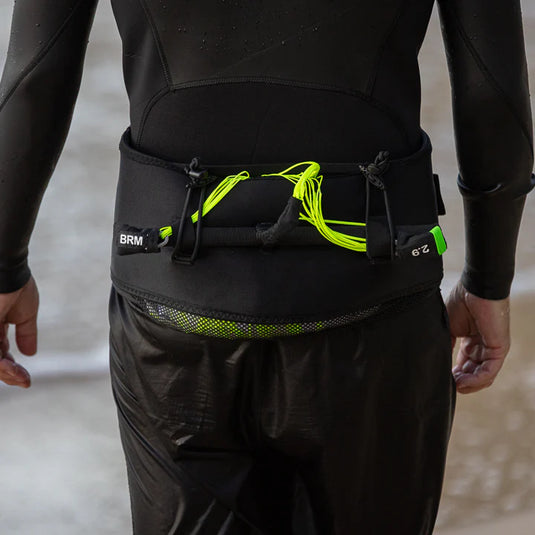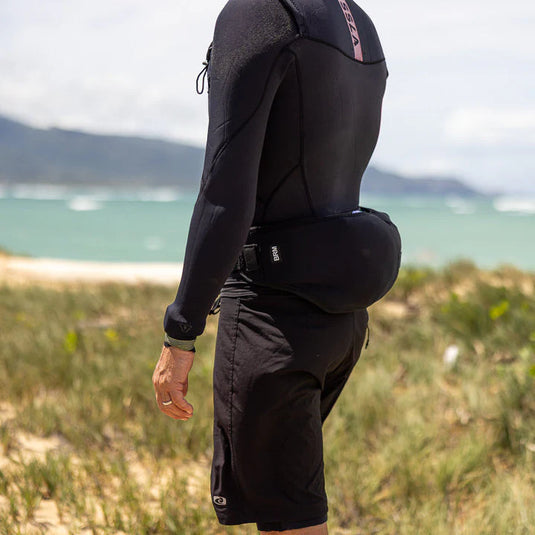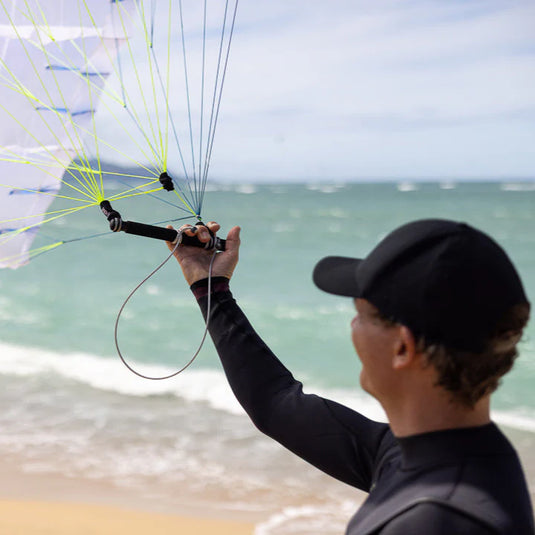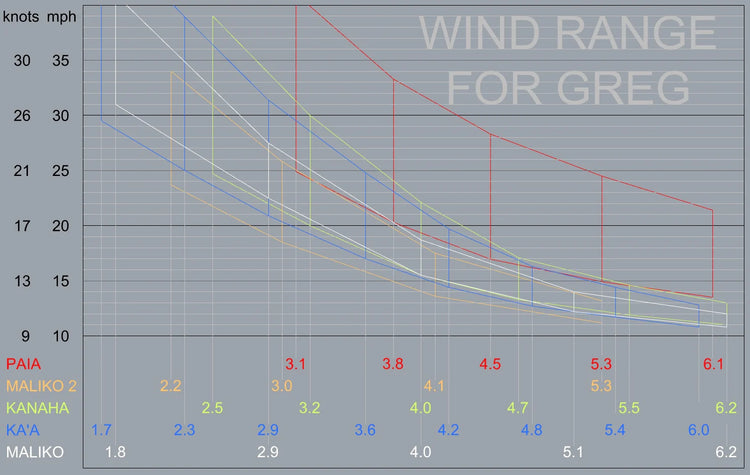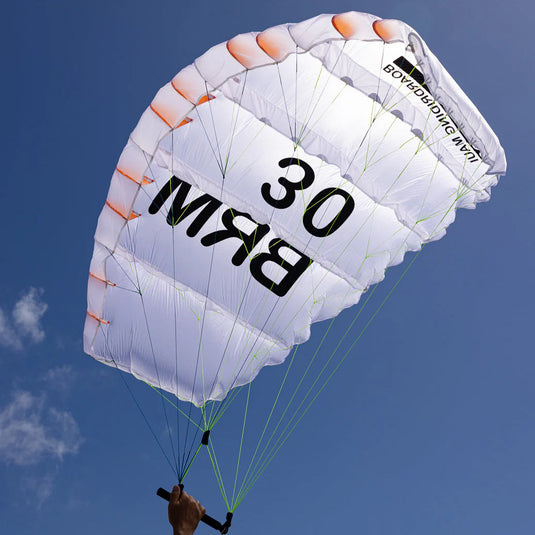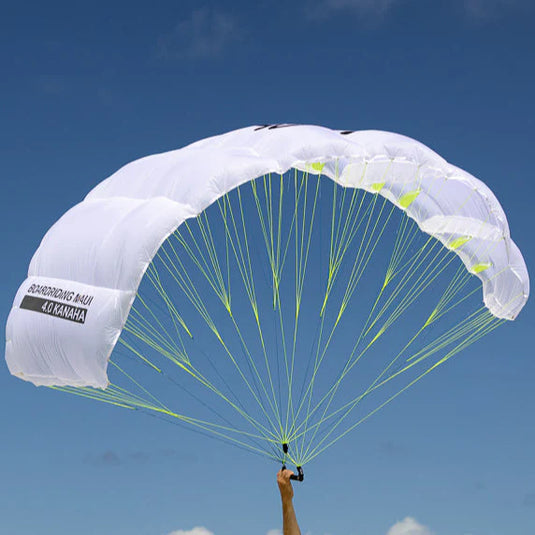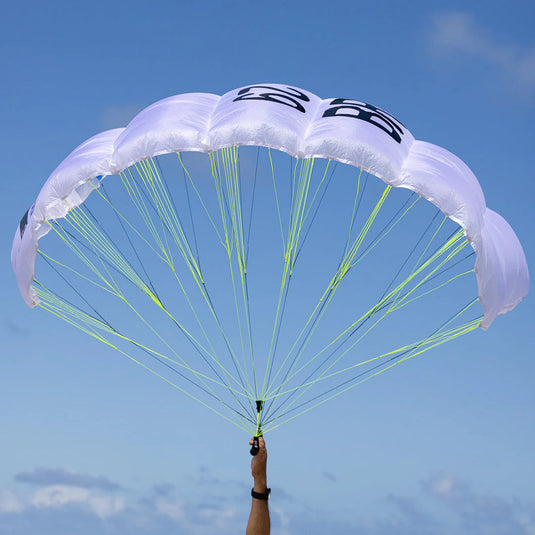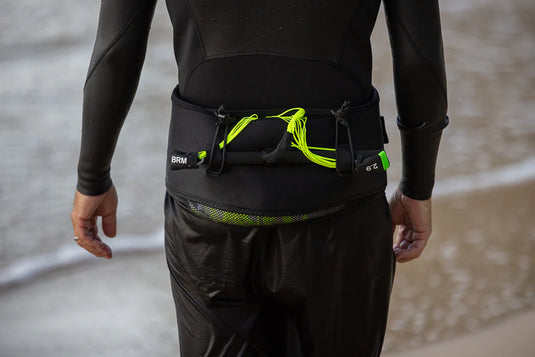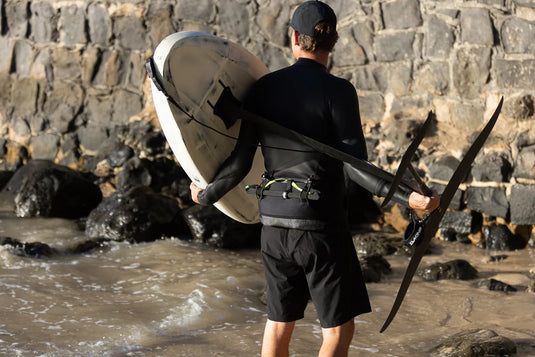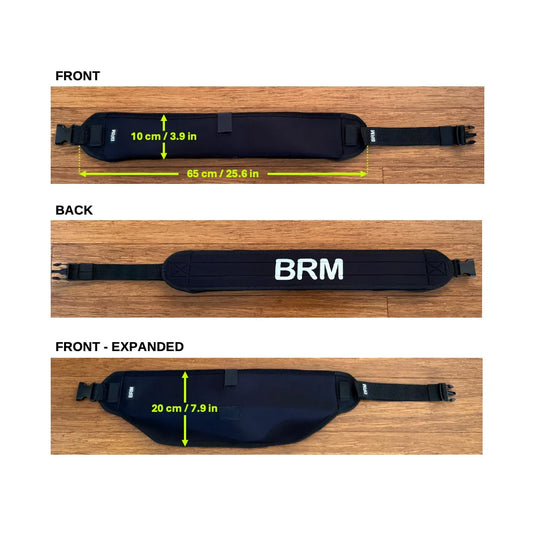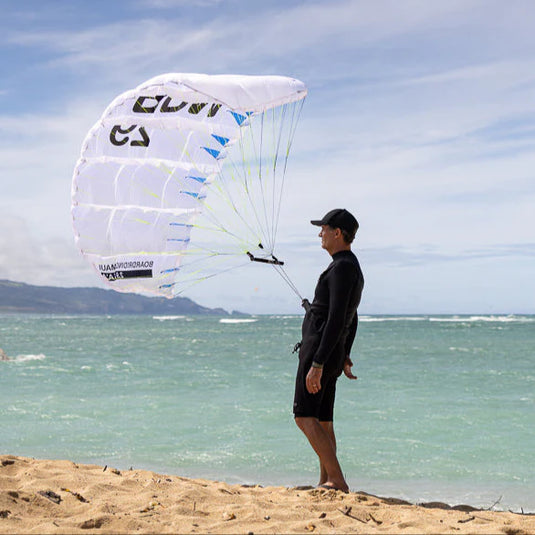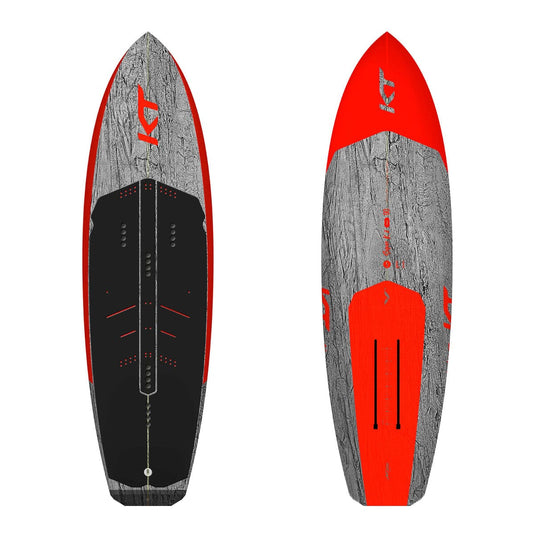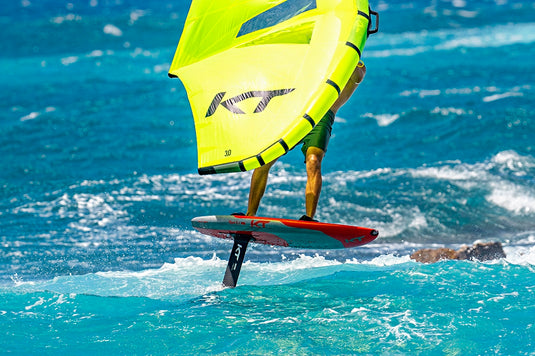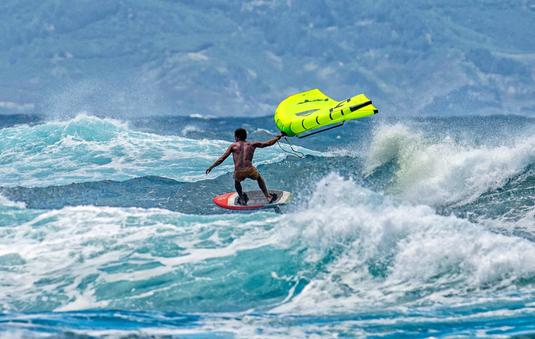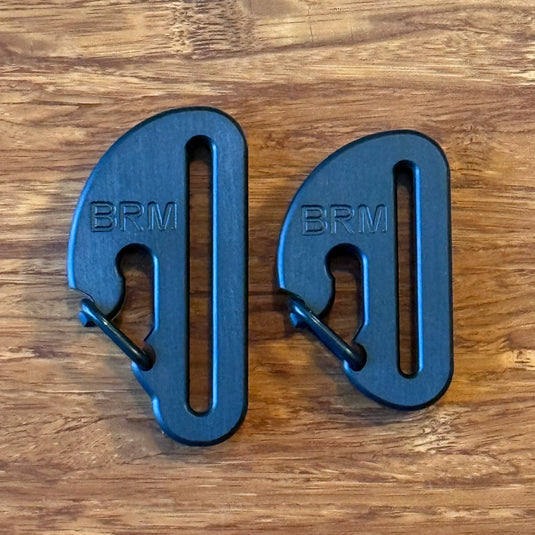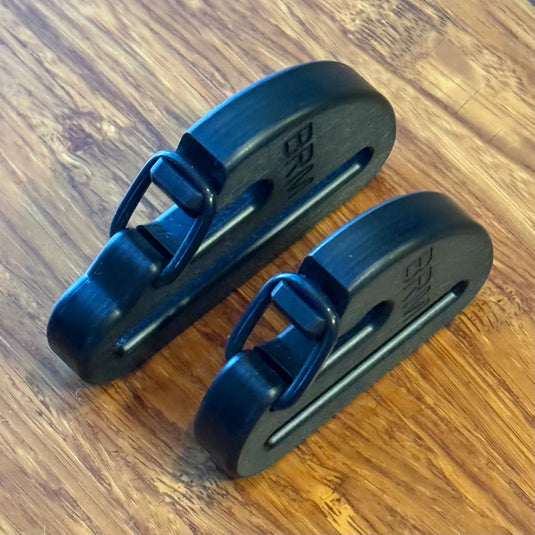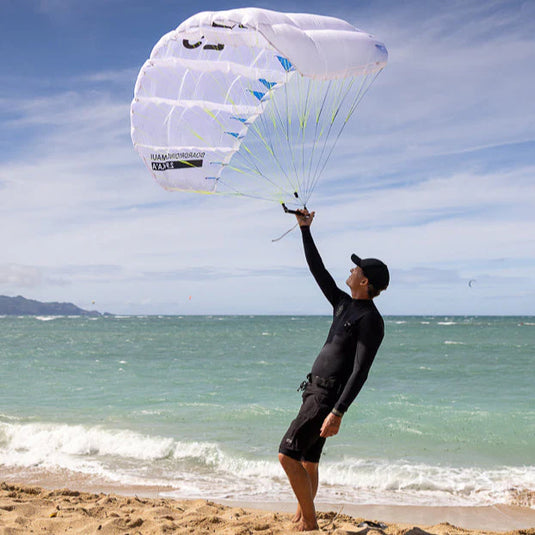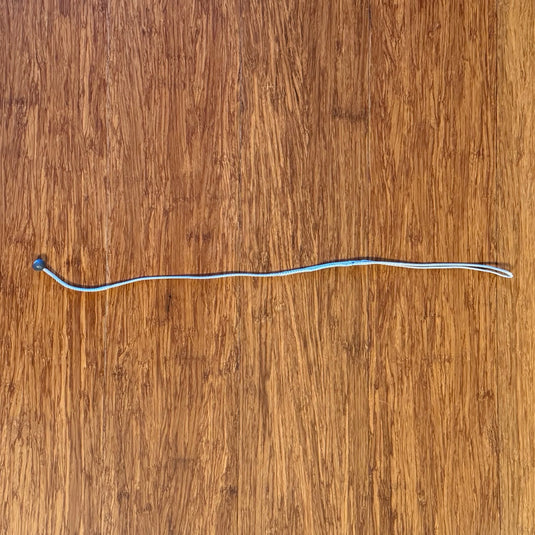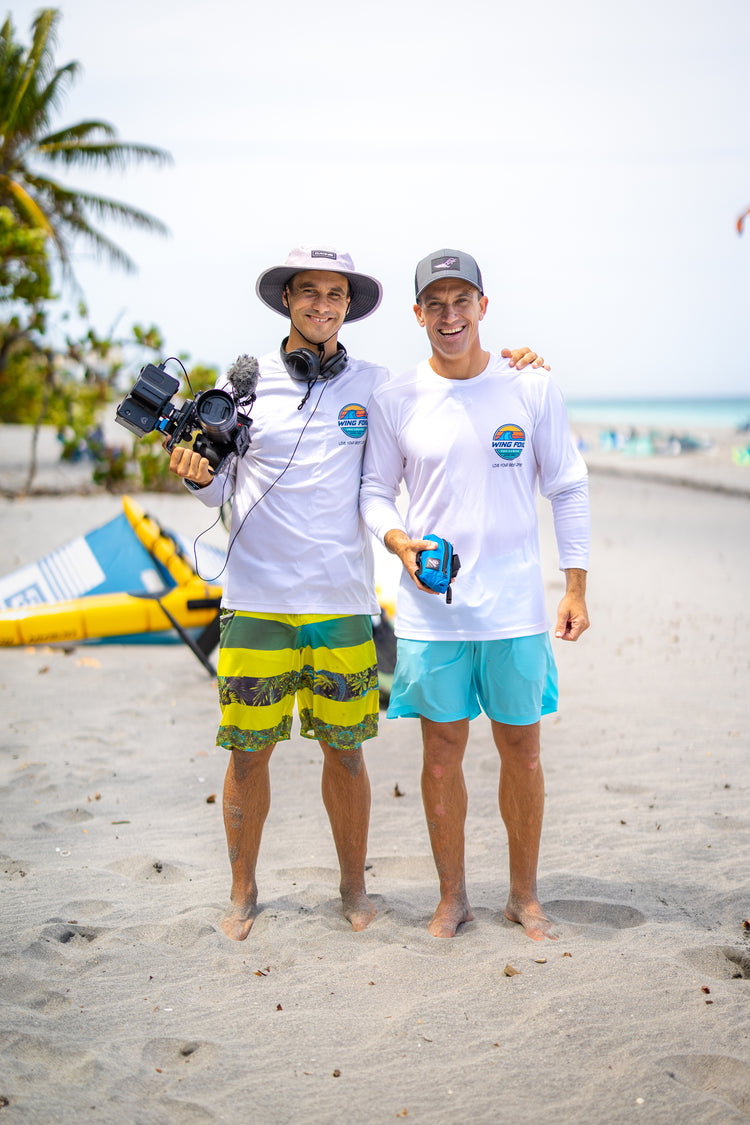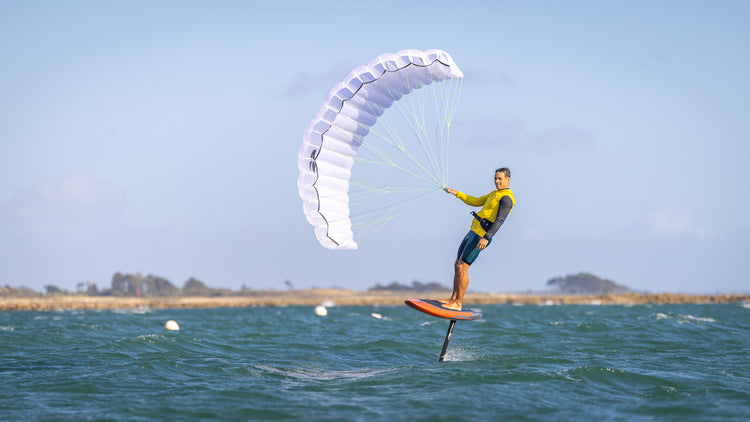
Parawing
BRM
SECOND GENERATION PERFORMANCE
The three models are optimized for different riding disciplines. While each has its unique characteristics, they share multiple design and performance advancements.
Double skin
HOW TO CHOOSE YOUR SINGLE SKIN PARAWING
DOWNWIND
Multiple Stow/Deploy vs. Single Stow per Run
MALIKO 2 - I send downwind, stow my parawing, and target a full run without re-deploying my parawing, so I prioritize a tiny pack size over speed of stow/deploy.
KA'A - I stow and re-deploy my parawing multiple times in a downwind run, so I prioritize speed of stow/deploy performance over a small difference in pack size.
Riding Power Level & Board Size
MALIKO 2 - I prioritize low-power effectiveness over high-power stability and ride a board above 60 liters.
KA'A - I prioritize high-power stability over low-power efficiency and want the option to ride boards below 60 liters.
UPWIND / DOWNWIND
KANAHA - I ride long distances upwind to access my downwind runs, so I prioritize upwind speed, high-power stability, and stow/deploy performance.
SURF
KA'A - I ride to surf. I prioritize instantaneous stow/deploy and getting back to the peak for the next wave.
BEGINNER & FREESTYLE
I’m a freestyle expert or parawing beginner. If had had to choose between 5% better upwind performance or 5% more responsive turns and maneuvers…
KANAHA - I’d prioritize upwind performance.
KA'A - I’d prioritize turns & maneuvers.
SINGLE SKIN VS DOUBLE SKIN
Single skins tend to position deeper in the wind window, giving them outstanding deploy speed and good low-end power. Their upwind drive is limited to a range of angle of attack. Sheeted out to lower angles of attack, single skins inherently pull down-wind, limiting their depower and comfortable range.
Double skins, in contrast, continue to drive upwind even when completely sheeted out to the lowest possible angle of attack. Double skins tend to position forward in the wind window, giving them comfortable range, depower, and upwind effectiveness. We developed the Paia double skin with a fully open leading and trailing edges for easy and quick release of trapped air and water. While not as crazy compact and weightless as a single skin, the double skin Paia retains the key functions of a parawing: retract, stow, deploy, and water relaunch.
